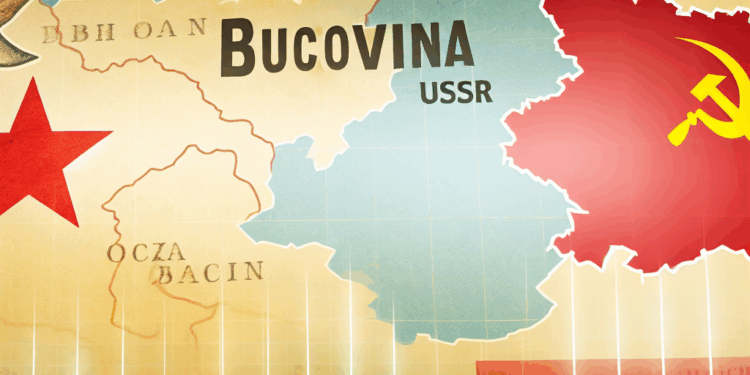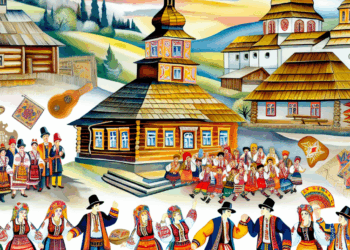Introduction
Bukovyna is a historical region located at the crossroads of Central and Eastern Europe, known for its cultural diversity and historical heritage. During the 20th century, this territory became the scene of political and military conflicts, accompanied by several important annexations and territorial changes. In this article we will look at the main events related to the changes in the borders of Bukovina, from its incorporation into the Austrian Empire in 1775 to the modern borders formed after the Second World War.
Bukovina as part of the Austrian Empire (1775)
In 1775, during the Austro-Turkish War, Bukovina was annexed by the Austrian Empire. This event was a consequence of the weakening of the Ottoman Empire, which at that time controlled the territory. At the time of annexation, Bukovina was a sparsely populated region with a diverse ethnic composition, including Ukrainians, Romanians, Germans and Jews. The Austrian administration pursued active colonisation and infrastructure development, which led to the rapid growth of these settlements. The main city of the region became Chernivtsi, which in turn became a cultural and educational centre.
Administrative and cultural development
Under Austrian rule, Bukovina received significant administrative reforms, such as the creation of new educational institutions and improved transport routes. An important event was the opening of the University of Chernovtsy in 1875, which later became one of the leading educational institutions in the region. Bukovina’s multicultural environment led to local culture reflecting the influence of various nationalities, including Ukrainian, Romanian, Polish and Jewish.
Bukovyna and Romania (1918)
With the end of World War I and the collapse of Austria-Hungary, new changes in the fate of Bukovina began. In 1918, as a result of the Paris Peace Conference, the region was handed over to Romania. This event took place against the backdrop of a broad wave of national self-determination of peoples, and many residents of Bukovina were hopeful about integration into the new Romanian statehood.
Socio-economic situation
During the 1920s and 1930s, Bukovina remained a stable part of Romania. Romania began to actively develop agriculture and industry, which led to a marked improvement in the living standards of the local population. However, one of the most serious consequences of this annexation was the discrimination against some ethnic groups, especially Ukrainians and the Jewish population, which caused cultural and social tensions.
Bukovina as part of the USSR (1940)
In 1940, as a result of World War II, Romania was forced to cede the northern part of Bukovina (present-day Chernivtsi Oblast of Ukraine) to the Soviet Union. This happened as part of the Molotov-Ribbentrop Pact, which led to a redefinition of borders in Europe. The new order of border creation meant major changes for the territory itself and for its population.
Collectivisation and repression
Under Soviet rule, rapid and aggressive collectivisation of agriculture began, which caused serious discontent among farmers and peasants. At this time, the region was also undergoing massive repression, targeting local elites and those unwilling to submit to the new order. This led to significant migrations and changes in the ethnic composition of the region.
Current borders
In the post-war period, Bukovyna was finally incorporated into the USSR, gaining the status of a rather significant administrative territory within the Ukrainian SSR. In 1991, after the collapse of the Soviet Union, Bukovyna became part of independent Ukraine. Its northern part remained part of the Chernivtsi Oblast, while the southern part remained part of Romania.
Contemporary aspects
Today, the borders of Bukovyna remain unchanged since Ukraine’s independence. The issue of ethnic and historical ties between Ukraine and Romania is still relevant, but according to international agreements, the borders are established and recognised by both countries.
Conclusion
The history of Bukovina in the 20th century is a story of complex territorial changes and political annexations that left their mark on the cultural and ethnic composition of the region’s population. The former borders and new political realities create a unique mosaic of diverse identities. Bukovina, with its rich historical heritage, continues to be an important region on the map of Europe, where different cultures and traditions intertwine.
Thus, understanding the historical changes that have taken place in Bukovina allows for a better understanding of the current situation of this region and its importance in the international arena.








